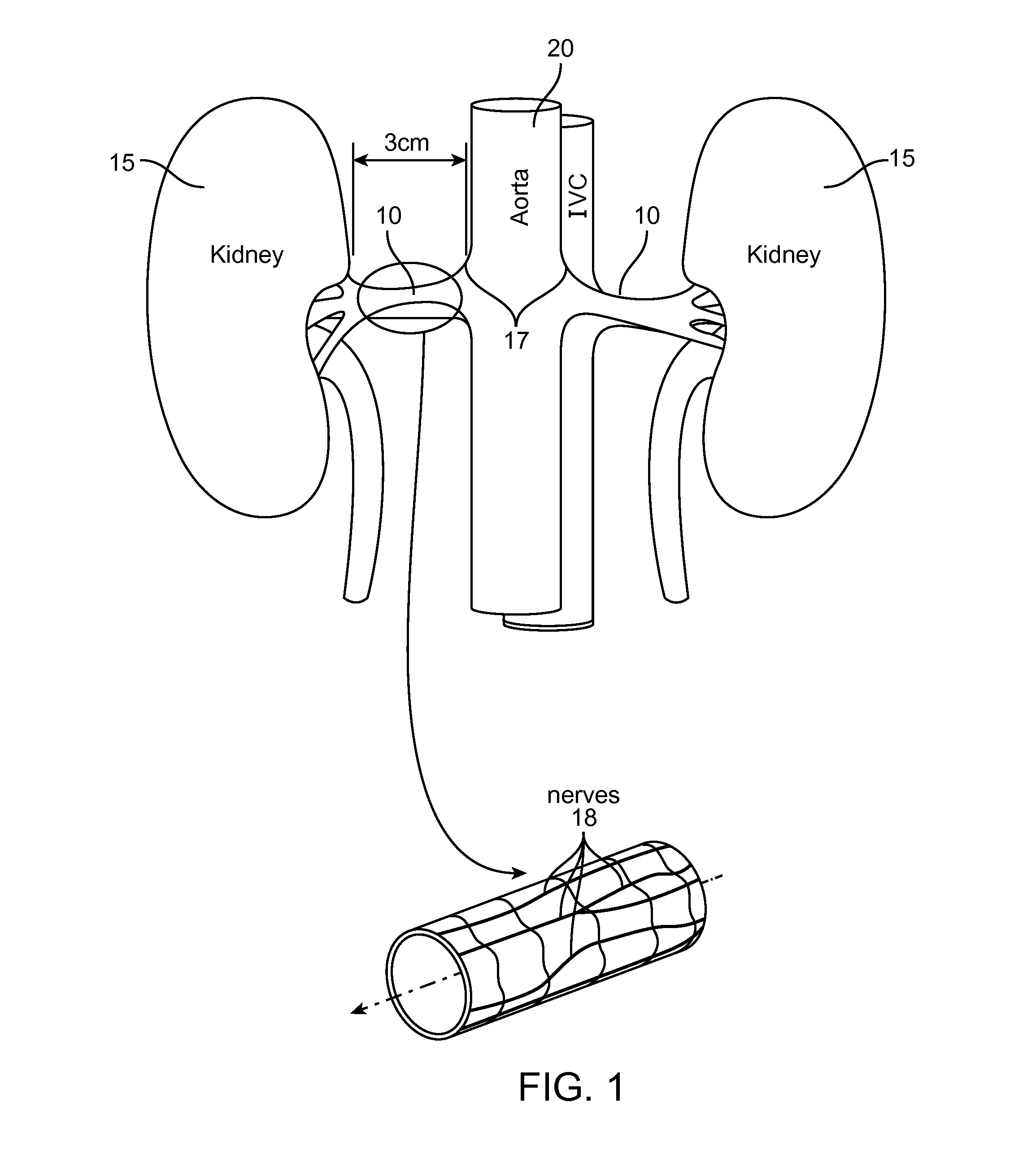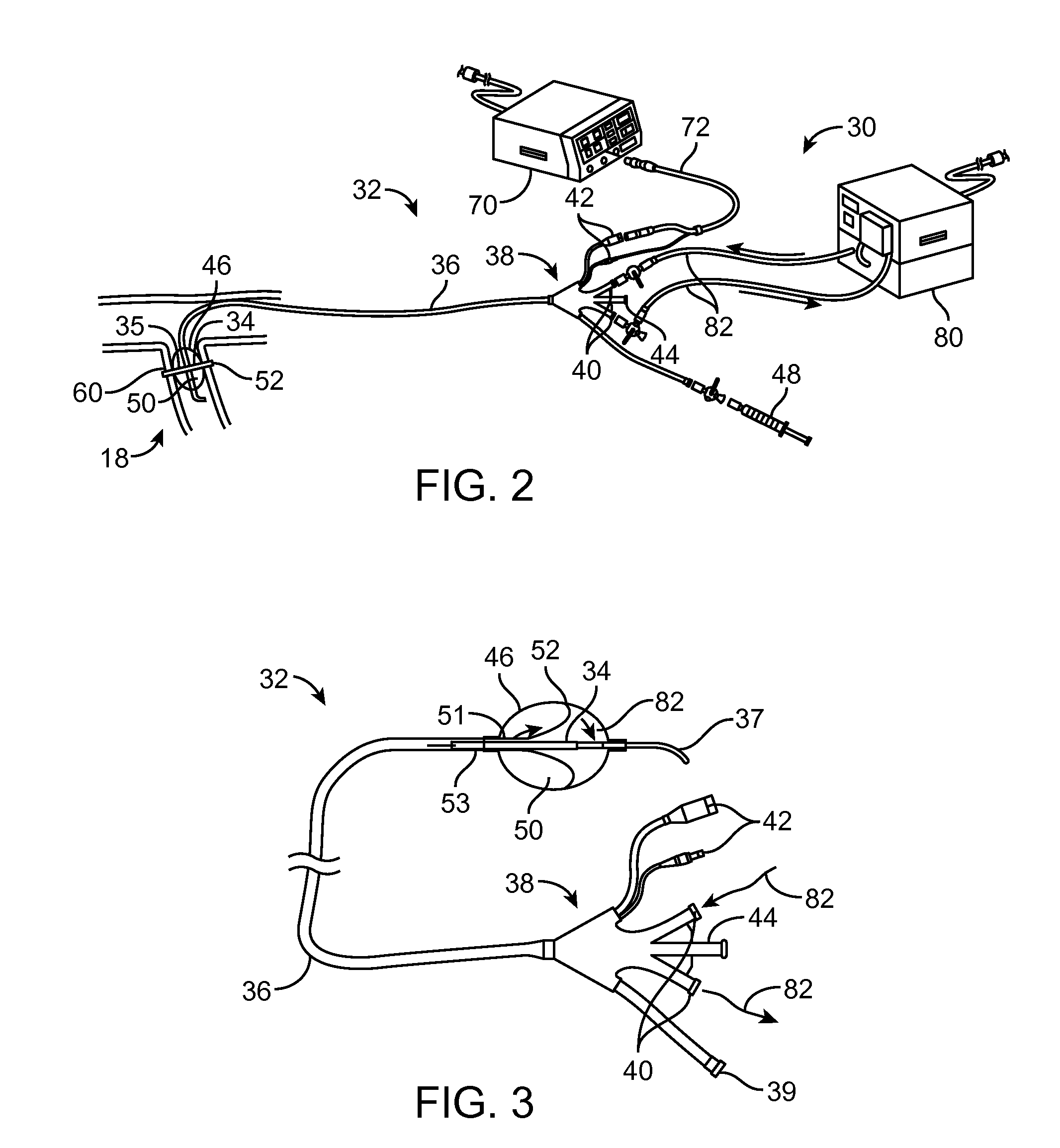Method and apparatus employing ultrasound energy to remodulate vascular nerves
- Summary
- Abstract
- Description
- Claims
- Application Information
AI Technical Summary
Benefits of technology
Problems solved by technology
Method used
Image
Examples
Embodiment Construction
[0053]This Specification discloses various catheter-based systems and methods for treating the tissue containing nerve pathways in the outer vessel or extra-vascular tissue. The systems and methods are particularly well suited for treating renal vessels for control of hypertension. For this reason, the systems and methods will be described in this context.
[0054]Still, it should be appreciated that the disclosed systems and methods are applicable for use in treating other dysfunctions elsewhere in the body, which are not necessarily hypertension-related. For example, the various aspects of the invention have application in procedures where nerve modulation induces vessel dilation or constriction to aid ischemic stroke victims, or reduce the incidence of cerebral hemorrhage.
[0055]In general, this disclosure relates to the ability of the ultrasound to heat the tissue in order to cause it interrupt or remodulate nerve function.
[0056]For the purposes of interrupting or remodulating nerve...
PUM
 Login to View More
Login to View More Abstract
Description
Claims
Application Information
 Login to View More
Login to View More - R&D
- Intellectual Property
- Life Sciences
- Materials
- Tech Scout
- Unparalleled Data Quality
- Higher Quality Content
- 60% Fewer Hallucinations
Browse by: Latest US Patents, China's latest patents, Technical Efficacy Thesaurus, Application Domain, Technology Topic, Popular Technical Reports.
© 2025 PatSnap. All rights reserved.Legal|Privacy policy|Modern Slavery Act Transparency Statement|Sitemap|About US| Contact US: help@patsnap.com



